Head and neck cancer may have drastic, long-lasting consequences, and dental professionals can play a crucial role in the patient’s treatment plan. Dental Tribune International had the opportunity to speak with Prof. Jonathan Clark, director of head and neck research at Chris O’Brien Lifehouse cancer treatment centre in Sydney in Australia and a leading name in head and neck cancer reconstructive surgery, about his career choice, recent developments in research, diagnosis and treatment of head and neck cancers, and the physical and mental challenges of his work.
Prof. Clark, how did you become interested in head and neck cancer?
I was fortunate to work with the late Prof. Chris O’Brien, who sadly died of a malignant brain tumour. He was a world leader in head and neck cancer surgery and an inspiration for many surgeons of my generation. During my fellowship, I travelled to Toronto, where I learnt about microvascular reconstruction. This has transformed the way that head and neck cancer surgery is performed by restoring form and function in patients undergoing radical surgery. I have focused on reconstructive surgery because it is at the cutting edge of surgery and integrates many aspects of surgery that I enjoy, particularly because there is so much opportunity to improve the quality of life of patients with head and neck tumours.
What significant changes in head and neck cancer research and treatment have you seen throughout your career?
There have been major changes in the demographics of those who develop head and neck cancer. Traditionally, head and neck cancer was mostly caused by smoking in patients of low socio-economic status, but now the most common head and neck cancers are not related to smoking. For example, oropharyngeal cancer is caused by the human papillomavirus and cutaneous squamous cell cancer by exposure to ultraviolet light, and oral cancer is rising in incidence in young non-smokers, although we cannot explain this trend. Australia has had very effective anti-smoking policies, which we should be grateful for.
Cancer outcomes are improving gradually. There are a variety of reasons for this. In part, this is because cancers not caused by smoking have a better prognosis, but head and neck cancer treatment has been a leader in multidisciplinary care. This has enabled patients to reliably complete quite taxing and difficult treatments. We often under-estimate how important it is to do the basics well. There continues to be significant unwarranted variation in how treatments are delivered, and this has a major impact on the effectiveness of treatments. There are also new treatments, such as robotic surgery, highly precise radiotherapy techniques and new drugs, available. We are now entering the age of immunotherapy, which has transformed previously incurable skin cancers into curable malignancies. In the future, we will see the effect of human papillomavirus vaccination. Australia has been very progressive in this regard, but it will probably be another 15 years before we see the rate of oropharyngeal cancer decline as a result of vaccination.
“We often under-estimate how important it is to do the basics well”
Research is much more sophisticated in many ways, but we are only just starting to understand the molecular basis of head and neck cancer. It is extremely diverse—there are ten different head and neck cancer sites and multiple types at each site—so we have struggled to find drug cures and targets. This has been frustrating compared with, say, breast cancer, leukaemia and melanoma, for which chemotherapy and targeted therapies have dramatically improved survival rates. The reasons are multifactorial, but partly because the diversity spreads resources thin, the genetic changes present are not well suited to targeted therapies. Also, typically, head and neck cancer research has been vastly underfunded compared with research into breast cancer and prostate cancer.
How has the awareness of head and neck cancer changed over time?
I do not think that awareness is very high. Most people think that head and neck cancer is brain cancer or that it has something to do with the spine. We have failed to advocate effectively or to have high-profile champions. There is no Movember or pink ribbon for head and neck cancer. Most head and neck cancers, individually, are uncommon, but as a group, it is the sixth most common cancer. If skin cancer is included, it is the most common, so it depends on what you consider head and neck cancer. In Australia, we treat a lot of skin cancer, so we tend to include it in the term even though most skin cancer lesions are small in extent and are managed by general medical practitioners (GPs), dermatologists and plastic surgeons. Owing to these factors, it is challenging to get a consistent message out in the community. Our main focus is oral cancer, and most people understand what that is.
It has been historically difficult to diagnose head and neck cancer early. What are some obstacles to early detection, and how can screening for this group of cancers be improved?
Most head and neck cancers do not cause symptoms until the cancer is advanced. One of the most common signs is a painless neck lump, which means the cancer has already spread to the lymph nodes. Some early cancers do cause symptoms. For example, small laryngeal cancer lesions may cause a hoarse voice, but they are difficult to see. It is also very difficult for GPs and dentists to detect throat cancer and many other head and neck cancers.
Oral cancer is different. It is often quite easy to see with a headlight, though most GPs do not own one and probably do not see enough cases to recognise what is concerning or not. Even dentists do not detect many oral cancer cases, so they can easily be missed. Traditionally, the higher prevalence in low socio-economic groups has meant that patients often do not see their GP unless they are really sick, and they are certainly not going to pay for a routine dental check. However, as the demographics change, this is becoming less of an issue.
“There continues to be significant unwarranted variation in how treatments are delivered, and this has a major impact on the effectiveness of treatments”
Screening is challenging. Each head and neck cancer is different, so there is never going to be a simple screening test like mammography, a prostate-specific antigen test or faecal occult blood test. We might have a blood test for oropharyngeal cancer that could be used for screening in the future. In the meantime, the education of patients, GPs and dentists will have the greatest impact. There are very simple messages that we can get out into the community—things like:
- A mouth ulcer that has remained unhealed for over four weeks needs referral.
- An ill-fitting denture or loose teeth require an examination to exclude gingival cancer.
- A neck lump present for over four weeks in an adult should be considered malignant until proved otherwise.
- A progressive facial palsy is not Bell’s palsy.
- A hoarse voice in a smoker needs to be referred for a nasendoscopy.
- Ear pain without an explanation could be throat cancer.
In your opinion, what is the most challenging part of treating patients with head and neck cancer?
We do major surgery which often exceeds 10 hours, sometimes in elderly patients with multiple comorbidities, in whom complications can be catastrophic. I also do a lot of reconstructive surgery and spend a large amount of time trying to improve the function and aesthetics of patients who have had large portions of their tongue, jaw or face removed. I very frequently see patients with problems, whereas patients who are doing well do not need the same intense follow-up. This can be disheartening. Needless to say, it is much worse for the patients who have to live with these problems than it is for the clinician, but it is still difficult work.
Editorial note:
Prof. Johnathan Clark is one of the speakers at the symposium, titled “Oral cancer – diagnosis, treatment and recovery”, which will be held during the 2023 FDI World Dental Congress on 26 September from 10:45 to 12:30. More information about the event can be found here.
Tags:
SYDNEY, Australia: Oral health in Australia has improved significantly over the last three decades, helped by the fluoridation of drinking water and the ...
GENEVA, Switzerland: Electronic health records (EHRs) have the potential to greatly improve the overall quality of dental care and research. FDI is ...
SYDNEY, Australia: Organised annually by FDI World Dental Federation, the World Dental Congress is one of the most prestigious continuing education events ...
HALLS CREEK, Australia: Ensuring timely and adequate dental care for remote Aboriginal communities in the Kimberley region of Australia remains a formidable...
LEIPZIG, Germany: Head and neck cancer is the sixth most common cancer worldwide and results in approximately 450,000 deaths per year. As a result of ...
SYDNEY, Australia: Utilising CAD tools, CT scans and a specially developed computer algorithm, Ben Ferguson, a PhD student at the University of Sydney’s ...
Dr. Zoe Brookes, Prof. Colman McGrath, Prof. Michael McCullough
Prof. Ihsane Ben Yahya, Dr. Astrid Czock, Dr. Patsy Yates, Prof. Jon Snaedal, Prof. Alessandro Villa
Ass. Prof. Ahmed Elsharkawy



 Austria / Österreich
Austria / Österreich
 Bosnia and Herzegovina / Босна и Херцеговина
Bosnia and Herzegovina / Босна и Херцеговина
 Bulgaria / България
Bulgaria / България
 Croatia / Hrvatska
Croatia / Hrvatska
 Czech Republic & Slovakia / Česká republika & Slovensko
Czech Republic & Slovakia / Česká republika & Slovensko
 France / France
France / France
 Germany / Deutschland
Germany / Deutschland
 Greece / ΕΛΛΑΔΑ
Greece / ΕΛΛΑΔΑ
 Italy / Italia
Italy / Italia
 Netherlands / Nederland
Netherlands / Nederland
 Nordic / Nordic
Nordic / Nordic
 Poland / Polska
Poland / Polska
 Portugal / Portugal
Portugal / Portugal
 Romania & Moldova / România & Moldova
Romania & Moldova / România & Moldova
 Slovenia / Slovenija
Slovenia / Slovenija
 Serbia & Montenegro / Србија и Црна Гора
Serbia & Montenegro / Србија и Црна Гора
 Spain / España
Spain / España
 Switzerland / Schweiz
Switzerland / Schweiz
 Turkey / Türkiye
Turkey / Türkiye
 UK & Ireland / UK & Ireland
UK & Ireland / UK & Ireland
 International / International
International / International
 Brazil / Brasil
Brazil / Brasil
 Canada / Canada
Canada / Canada
 Latin America / Latinoamérica
Latin America / Latinoamérica
 USA / USA
USA / USA
 China / 中国
China / 中国
 India / भारत गणराज्य
India / भारत गणराज्य
 Japan / 日本
Japan / 日本
 Pakistan / Pākistān
Pakistan / Pākistān
 Vietnam / Việt Nam
Vietnam / Việt Nam
 ASEAN / ASEAN
ASEAN / ASEAN
 Israel / מְדִינַת יִשְׂרָאֵל
Israel / מְדִינַת יִשְׂרָאֵל
 Algeria, Morocco & Tunisia / الجزائر والمغرب وتونس
Algeria, Morocco & Tunisia / الجزائر والمغرب وتونس
:sharpen(level=0):output(format=jpeg)/up/dt/2024/04/53663749881_337f3c647e_k_1920x1080px.jpg)
:sharpen(level=0):output(format=jpeg)/up/dt/2024/04/NEWS_1920x1080px.jpg)
:sharpen(level=0):output(format=jpeg)/up/dt/2024/04/Angelo-Maura_Align-2_1920px.jpg)
:sharpen(level=0):output(format=jpeg)/up/dt/2024/04/A-non-surgical-orthodontic-approach-using-clear-aligners-in-a-Class-III-adult-patient_header.jpg)
:sharpen(level=0):output(format=jpeg)/up/dt/2024/04/Gustavsson-Malin-Q73H1073_1920x1080px.jpg)








:sharpen(level=0):output(format=png)/up/dt/2022/01/Align-vertical-Digital-4logo-lockup-RGB.png)
:sharpen(level=0):output(format=png)/up/dt/2022/06/RS_logo-2024.png)
:sharpen(level=0):output(format=png)/up/dt/2011/11/ITI-LOGO.png)
:sharpen(level=0):output(format=png)/up/dt/2022/01/Sprintray_Logo_2506x700.png)
:sharpen(level=0):output(format=png)/up/dt/2020/02/Camlog_Biohorizons_Logo.png)
:sharpen(level=0):output(format=jpeg)/up/dt/e-papers/337969/1.jpg)
:sharpen(level=0):output(format=jpeg)/up/dt/e-papers/334598/1.jpg)
:sharpen(level=0):output(format=jpeg)/up/dt/e-papers/333249/1.jpg)
:sharpen(level=0):output(format=jpeg)/up/dt/e-papers/329653/1.jpg)
:sharpen(level=0):output(format=jpeg)/up/dt/e-papers/326324/1.jpg)
:sharpen(level=0):output(format=jpeg)/up/dt/e-papers/322861/1.jpg)
:sharpen(level=0):output(format=png)/up/dt/2011/07/fdi.png)
:sharpen(level=0):output(format=jpeg)/up/dt/2023/09/There-is-so-much-opportunity-to-improve-the-quality-of-life-of-patients-with-head-and-neck-tumours-2.jpg)
:sharpen(level=0):output(format=jpeg)/up/dt/2024/03/profile-image-300x300.jpg)
:sharpen(level=0):output(format=jpeg)/up/dt/2023/09/Dentistry-in-Australia-private-practices-and-fyling-doctors-1.jpg)
:sharpen(level=0):output(format=jpeg)/up/dt/2023/09/FDI-and-Henry-Schein-working-to-introduce-integrated-electronic-health-records-to-dentistry.jpg)
:sharpen(level=0):output(format=jpeg)/up/dt/2023/09/FDI-to-welcome-the-world-of-dentistry-to-Australia_1-1.jpg)
:sharpen(level=0):output(format=jpeg)/up/dt/2023/08/Rural-Australian-dental-care-programme-is-a-model-of-efficiency-and-success.jpg)
:sharpen(level=0):output(format=jpeg)/up/dt/2023/05/Head-and-neck-cancer-Additional-chemotherapy-increases-survival-rate-for-older-patients.jpg)
:sharpen(level=0):output(format=jpeg)/up/dt/2022/07/PhD-student-develops-program-that-better-prepares-surgeons-for-mandibular-reconstruction.jpg)


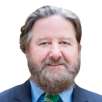

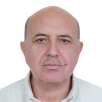
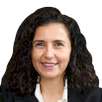


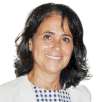
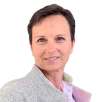
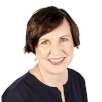
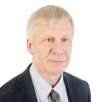
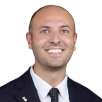

:sharpen(level=0):output(format=jpeg)/up/dt/2023/09/Proper-resources-and-evidence-based-practices-are-crucial-for-providing-high-quality-dental-care-.jpg)
:sharpen(level=0):output(format=jpeg)/up/dt/2023/05/Dentsply-Sirona-FDI-and-Smile-Train-deliver-first-ever-global-protocols-for-digital-cleft-treatment.jpg)
:sharpen(level=0):output(format=jpeg)/up/dt/2023/02/FDI-celebrates-World-Oral-Health-Day.jpg)
:sharpen(level=0):output(format=jpeg)/up/dt/e-papers/334598/1.jpg)
:sharpen(level=0):output(format=jpeg)/up/dt/e-papers/333249/1.jpg)
:sharpen(level=0):output(format=jpeg)/up/dt/e-papers/329653/1.jpg)
:sharpen(level=0):output(format=jpeg)/up/dt/e-papers/326324/1.jpg)
:sharpen(level=0):output(format=jpeg)/up/dt/e-papers/322861/1.jpg)
:sharpen(level=0):output(format=jpeg)/up/dt/e-papers/337969/1.jpg)
:sharpen(level=0):output(format=jpeg)/up/dt/e-papers/337969/2.jpg)
:sharpen(level=0):output(format=jpeg)/wp-content/themes/dt/images/3dprinting-banner.jpg)
:sharpen(level=0):output(format=jpeg)/wp-content/themes/dt/images/aligners-banner.jpg)
:sharpen(level=0):output(format=jpeg)/wp-content/themes/dt/images/covid-banner.jpg)
:sharpen(level=0):output(format=jpeg)/wp-content/themes/dt/images/roots-banner-2024.jpg)
To post a reply please login or register